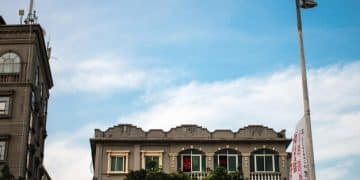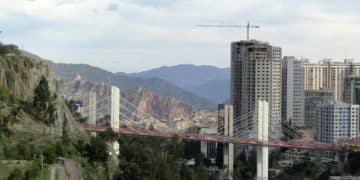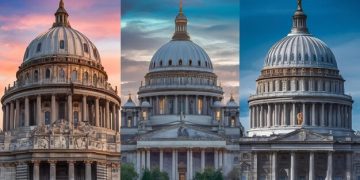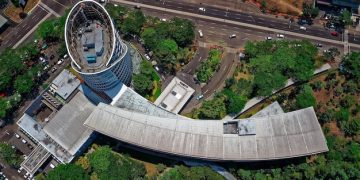Peru’s Anti-Corruption: Boosting US Investment Confidence by 2025?

Peru’s anti-corruption efforts are crucial for enhancing US investment confidence by 2025, impacting economic stability and international partnerships through improved governance and transparency.
Will Peru’s Anti-Corruption Efforts: Will They Improve US Investment Confidence by 2025? Recent initiatives aimed at combating corruption are expected to foster a more transparent and reliable business environment, potentially attracting increased investments from the United States.
Peru’s Fight Against Corruption: An Overview
Peru has been grappling with corruption issues for decades, affecting various sectors from politics to business. Understanding the historical context and current anti-corruption strategies is essential to assess the potential impact on foreign investment.
Historical Context of Corruption in Peru
Corruption in Peru has deep roots, with instances dating back to colonial times. In recent history, several high-profile cases have involved government officials, business leaders, and even presidents. These scandals not only erode public trust but also deter foreign investment.
Current Anti-Corruption Strategies
The Peruvian government has implemented various anti-corruption strategies, including strengthening legal frameworks, enhancing transparency, and promoting whistleblower protection. These measures aim to create a more accountable and ethical environment.
- Strengthening the Judiciary: Enhancing the independence and efficiency of the judicial system to prosecute corruption cases effectively.
- Promoting Transparency: Implementing measures to increase transparency in government procurement processes and financial transactions.
- Enhancing Whistleblower Protection: Providing legal protection and incentives for individuals who report corruption.
- International Cooperation: Collaborating with international organizations and other countries to combat transnational corruption.
Peru’s commitment to fighting corruption is evident in its adherence to international conventions and agreements, such as the United Nations Convention Against Corruption and the OECD Anti-Bribery Convention. However, implementing these strategies effectively remains a significant challenge.

US Investment in Peru: Current Scenario
The United States is a significant investor in Peru, with investments spanning various sectors, including mining, energy, and finance. Understanding the current investment landscape is crucial to assessing how anti-corruption efforts could influence future investments.
Key Sectors for US Investment
US investment in Peru is concentrated in sectors such as mining, energy, finance, and telecommunications. These sectors have historically offered attractive returns, but they are also vulnerable to corruption risks.
Risks and Opportunities for US Investors
US investors face both risks and opportunities in Peru. Corruption poses a significant risk, as it can lead to increased costs, legal challenges, and reputational damage. However, successful anti-corruption efforts could create new opportunities by leveling the playing field and fostering a more predictable business environment.
Opportunities for US investors in Peru include the country’s abundant natural resources, growing middle class, and strategic location. The potential for increased investment is substantial if corruption risks are mitigated.
The Impact of Corruption on Investment Decisions
Corruption significantly impacts investment decisions, affecting not only the amount of investment but also the types of projects that are pursued. Investors often perceive countries with high levels of corruption as riskier and less attractive.
How Corruption Deters Investment
Corruption can deter investment by increasing transaction costs, creating uncertainty, and undermining the rule of law. Companies may be required to pay bribes to secure contracts, obtain permits, or avoid regulatory scrutiny, which can significantly reduce profitability.
Case Studies of Corruption Impacting Investment
Several case studies illustrate the negative impact of corruption on investment in Peru. For example, infrastructure projects have been delayed or abandoned due to corruption scandals, leading to significant losses for investors and taxpayers. Likewise, mining projects have faced community opposition and regulatory challenges due to allegations of corruption.
- Odebrecht Scandal: The Odebrecht scandal, which involved bribery and kickbacks in several Latin American countries, had a profound impact on investment in Peru, leading to project delays and reputational damage.
- Lava Jato Investigation: The Lava Jato investigation revealed widespread corruption in the construction industry, affecting numerous projects and deterring potential investors.
- Local Government Corruption: Corruption at the local government level often involves bribery and embezzlement, diverting funds from essential services and infrastructure development.
Anti-Corruption Measures: Progress and Challenges
While Peru has made progress in implementing anti-corruption measures, significant challenges remain. Assessing the effectiveness of these measures and identifying the remaining obstacles is crucial to determine the potential impact on US investment confidence.
Effectiveness of Current Measures
Some of the anti-corruption measures have shown promise, such as the establishment of specialized anti-corruption courts and the implementation of e-governance initiatives. However, enforcement remains a challenge, and many cases are still pending in the courts.
Challenges in Implementation
Challenges in implementing anti-corruption measures include limited resources, weak institutional capacity, and political interference. Overcoming these obstacles requires sustained commitment and coordinated efforts from various stakeholders.
To enhance the effectiveness of anti-corruption measures, Peru needs to strengthen institutional capacity, promote transparency and accountability, and foster a culture of integrity. Collaboration with civil society organizations and international partners is also essential.

Looking Ahead: Scenarios for 2025
Several scenarios could play out by 2025, depending on the success of Peru’s anti-corruption efforts. These scenarios range from significant improvements in investment confidence to continued stagnation and even deterioration.
Optimistic Scenario: Increased Investment Confidence
In an optimistic scenario, Peru’s anti-corruption efforts gain traction, leading to increased transparency, accountability, and rule of law. This would boost investor confidence, attracting more US investment and fostering sustainable economic growth.
Pessimistic Scenario: Continued Corruption
In a pessimistic scenario, corruption persists or even worsens, deterring investment and undermining economic stability. This could lead to capital flight, reduced growth, and increased social unrest.
- Political Instability: Frequent changes in government and political instability could undermine anti-corruption efforts.
- Lack of Enforcement: Weak enforcement of anti-corruption laws and regulations could perpetuate impunity and deter potential investors.
- Economic Downturn: An economic downturn could exacerbate corruption risks as companies and individuals seek to cut corners and evade regulations.
Policy Recommendations for Enhancing US Investment
To enhance US investment confidence in Peru by 2025, several policy recommendations can be considered. These recommendations focus on strengthening anti-corruption efforts, promoting transparency, and fostering a more predictable business environment.
Strengthening Anti-Corruption Frameworks
Strengthening anti-corruption frameworks involves enacting and enforcing robust anti-corruption laws, enhancing transparency in government procurement, and protecting whistleblowers. It also requires strengthening the judiciary and ensuring its independence.
Promoting Transparency and Accountability
Promoting transparency and accountability involves implementing e-governance initiatives, publishing government contracts and financial transactions online, and establishing independent oversight bodies. It also requires engaging civil society organizations in monitoring government activities.
Fostering a predictable business environment involves streamlining regulations, reducing bureaucratic red tape, and ensuring fair and consistent application of the law. It also requires protecting property rights and enforcing contracts effectively.
| Key Point | Brief Description |
|---|---|
| 💰 Economic Impact | Corruption deters US investment, impacting Peru’s growth. |
| 🛡️ Anti-Corruption Strategies | Peru is implementing measures but faces enforcement challenges. |
| 📈 US Investment | Key sectors like mining and energy are vulnerable to corruption. |
| 🏛️ Policy Changes | Strengthening legal systems and promoting transparency can help. |
Frequently Asked Questions
▼
US investments in Peru are primarily in mining, energy, finance, and telecommunications, attracted by natural resources and growing markets.
▼
Corruption increases transaction costs, creates uncertainty, and undermines the rule of law, making Peru a riskier investment destination.
▼
Peru has strengthened legal frameworks, enhanced transparency, promoted whistleblower protection, and cooperated internationally to fight corruption.
▼
Peru faces challenges such as limited resources, weak institutional capacity, and political interference in implementing anti-corruption efforts.
▼
Enhancing US investment confidence requires stronger anti-corruption laws, increased transparency, accountability, and a predictable business environment in Peru.
Conclusion
In conclusion, Peru’s Anti-Corruption Efforts: Will They Improve US Investment Confidence by 2025? The success of Peru’s anti-corruption efforts will significantly influence US investment confidence by 2025. By strengthening legal frameworks, promoting transparency, and fostering a more predictable business environment, Peru can attract increased US investment and drive sustainable economic growth. However, continued challenges in implementation and enforcement must be addressed to achieve these goals.





